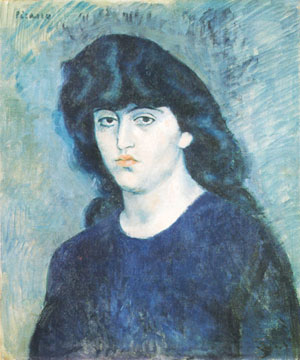Facts About Portrait of Suzanne Bloch
The "Portrait of Suzanne Bloch" is a painting by the renowned Spanish artist Pablo Picasso, created in Paris in 1904 during his melancholic Blue Period. Suzanne Bloch, the subject of the painting, was a celebrated Wagnerian singer and the sister of the violinist Henri Bloch. Picasso met Suzanne through the French poet Max Jacob, and she agreed to sit for the portrait in Picasso’s studio.
This artwork is notable for its use of monochromatic shades of blue and blue-green, with subtle hints of warmer tones, effectively capturing the somber mood typical of Picasso’s Blue Period.
The painting has an intriguing history. Initially owned by Suzanne Bloch, it passed through the hands of various collectors before ultimately being acquired by the São Paulo Museum of Art. In 2007, it was stolen from the museum but fortunately recovered undamaged by the São Paulo police.
Over the years, the "Portrait of Suzanne Bloch" has been displayed in numerous prestigious galleries and museums worldwide, including the Thannhauser Gallery in Berlin, the Museo Nacional de Bellas Artes in Buenos Aires, and the Museu Picasso in Barcelona. This painting holds a critical place in Picasso’s oeuvre, illustrating his transition from the Blue Period to a style that hints at his future explorations in cubism, influenced by Cézanne and post-impressionism. Critics and art enthusiasts alike have praised it as a significant milestone in Picasso’s artistic journey.

 French Guiana
French Guiana